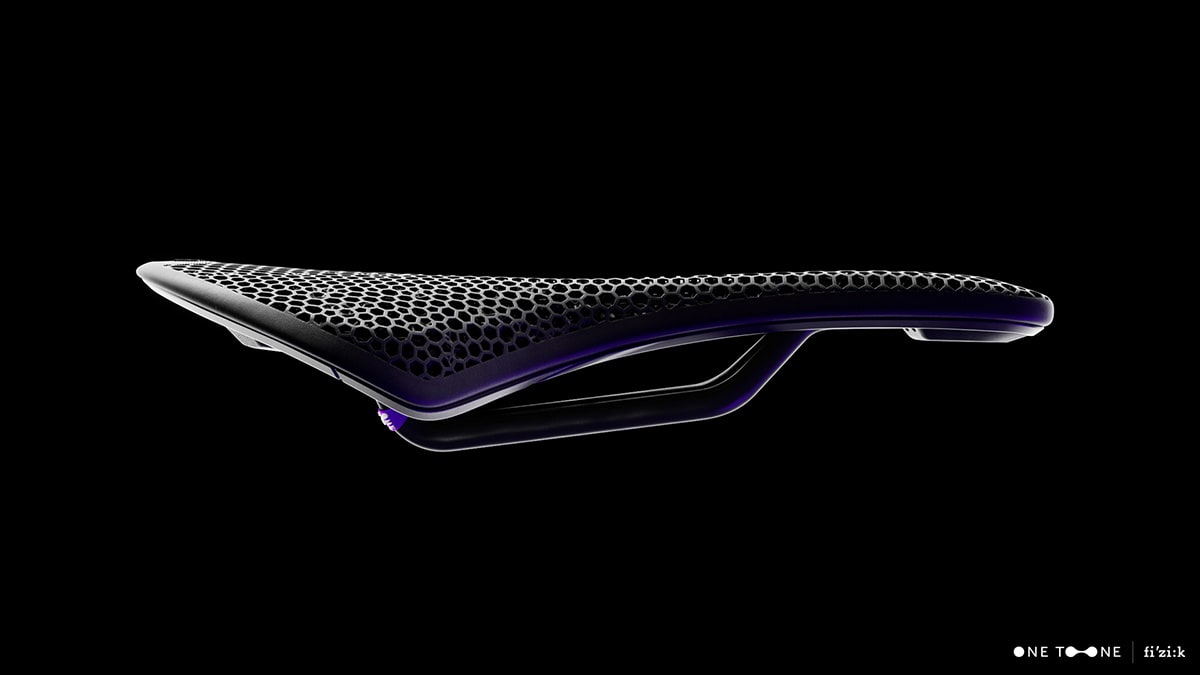Fizik’s One-to-One Creates Custom Saddles for Riders Using Carbon Technology
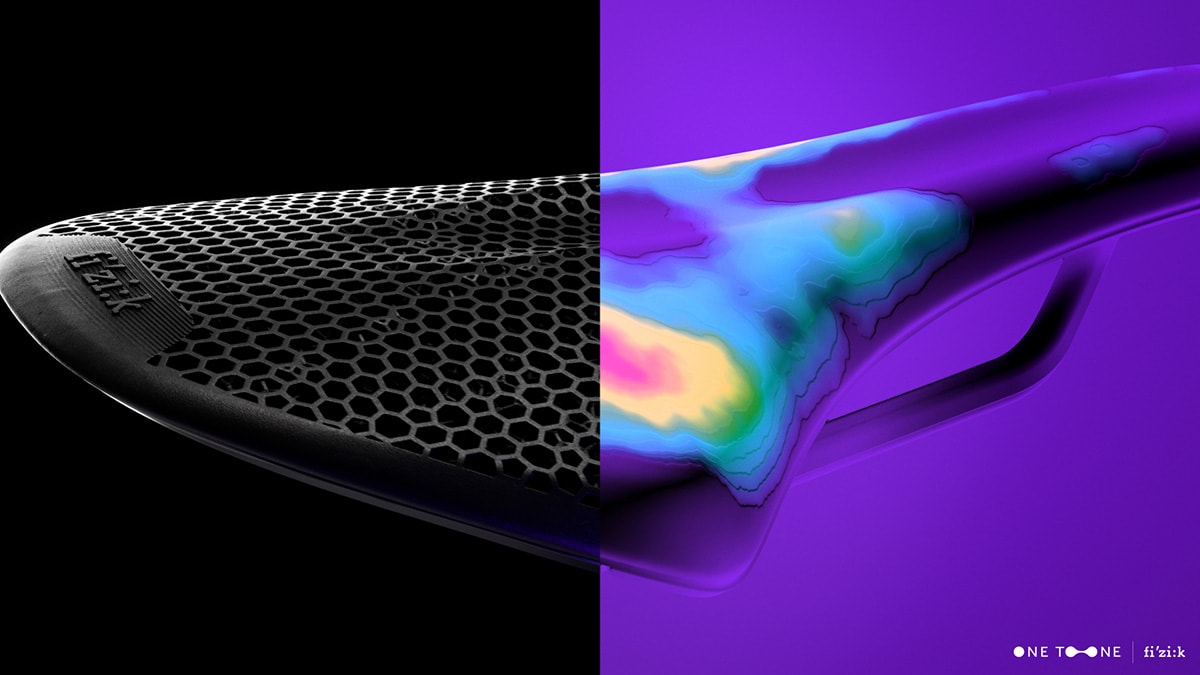
Saddles are a crucial point of contact between riders and their bikes and can make a huge difference in riding experience, comfort, and performance. Traditionally, saddles use uniform-density foam for padding and are made into different sizes to fit different ischial bone widths and shapes. Sometimes inserts are added to provide additional comfort in specific contact spots. Riders may try multiple seats before finding the saddles that fit their particular body characteristics and riding position.
Fizik has a track record of using technology and data to create revolutionary products. Using rider data from their own testing and performance enhancing technology, Powered by Carbon, Fizik has designed and produced multiple latticed saddle models using Carbon’s elastomeric materials and the Carbon Digital Light Synthesis™ (Carbon DLS™) process. Because these designs were successful, they felt confident in taking the next step: custom saddles with their recently launched One-to-One product.
Why Custom Saddles?
Every cyclist is unique. Rider experience, sensitivity, history of injuries, body shape, riding goals, and more can all affect the way we sit on the saddle. A good, accurate fit depends on many factors including the rider, bike geometry, intended use, saddle shape, and preferred riding position. A saddle designed for many can provide a generic solution to very specific problems, but when more of these fit factors can be tuned specifically to the rider, it leads to a more comfortable ride and better performance. Understandably, some cyclists go on a long quest to find the right saddle.
A customized approach would directly address each rider’s comfort and performance needs all at once. If Fizik could record the pressure a cyclist exerts on the saddle dynamically while riding, and produce a map of their unique pressure profile, they could then use this data to produce a custom, 3D-printed saddle topper.
The Solution
Fizik had already introduced its Adaptive 3D line of saddles using Carbon DLS. Carbon’s portfolio of elastomeric materials, lattice design software, and 3D printing technology allowed them to develop a new saddle without the constraints or limitations imposed by traditional production methods and materials. They designed and manufactured multiple functional zones within the saddle, joined together progressively and seamlessly in the same padding. The next step for Fizik was developing a custom saddle offering for their riders.
Fizik collaborated with gebioMized, a leader in pressure map data, to engineer a system for collecting pressure map data from riders to customize a saddle design with distinctive zonal cushioning tuned to adapt specifically to the rider’s body.
Additive manufacturing makes it easier to manufacture one-off production parts, as opposed to traditional manufacturing methods like injection molding, which requires a larger-scale commitment and entails high tooling costs. Without the constraints of batch production imposed by injection molding methods, each 3D-printed saddle padding can be unique, which means it’s possible for saddle padding to be produced based on an individual rider’s specifications. With this as Fizik’s goal, they spent three years researching, developing, testing, and confirming a process through which they could capture, interpret, and translate a rider’s personal pressure data into a 3D-printed saddle.
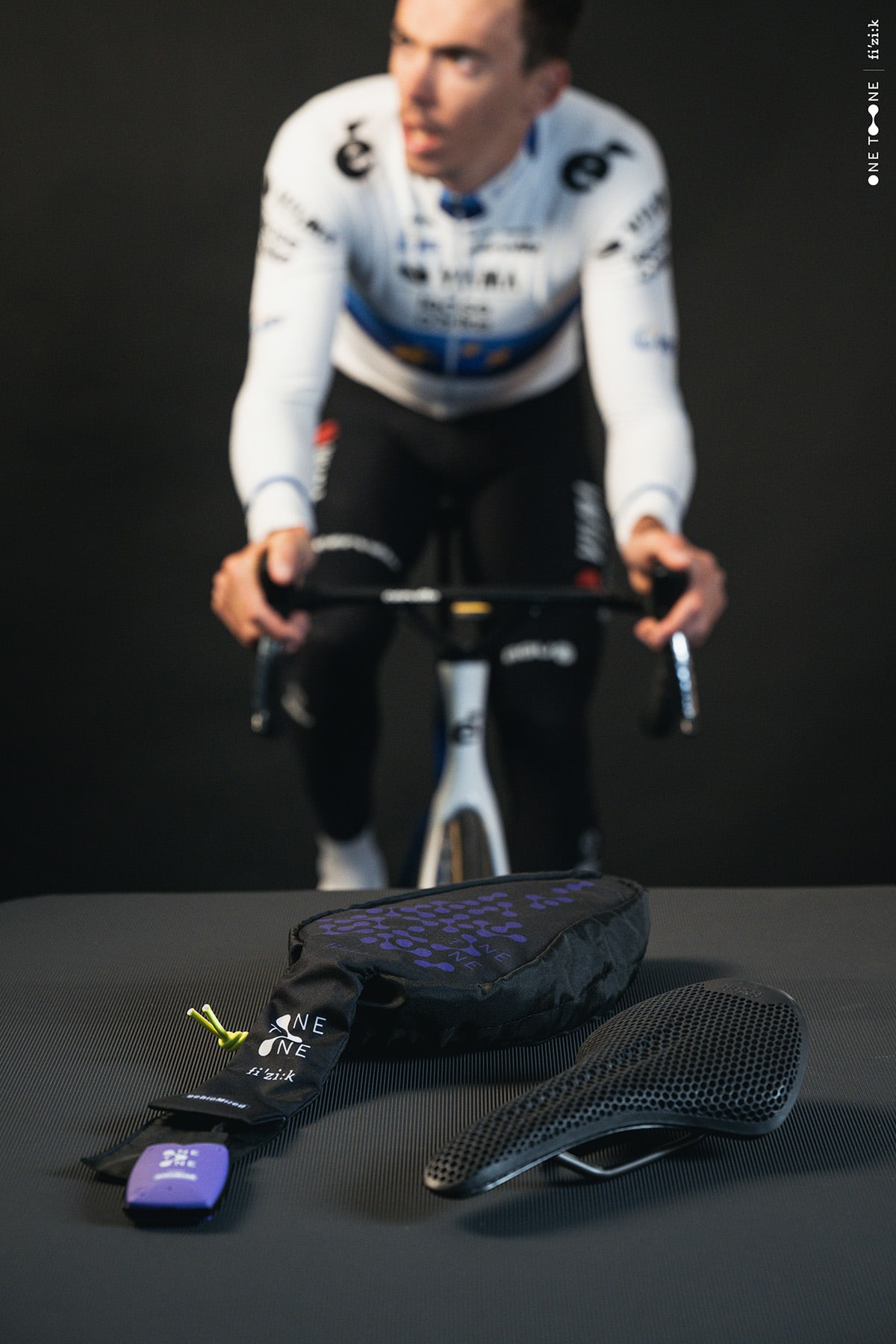
If they could record the pressure a cyclist exerts on the saddle dynamically while riding, and map out a unique pressure profile, they could then use this data to produce a bespoke 3D-printed saddle padding that offers unparalleled improvements in both comfort and performance.
We know that a good, accurate fit depends on many factors: bike geometry, intended use, saddle shape, and position. But most importantly every cyclist is unique: experience, sensitivity, history of injuries, body shape, riding goals. All of this can affect the way we sit on the saddle.
It’s clear that a traditional one-to-many saddle design can only provide an approximate solution to very specific problems. With One-to-One today we achieve what every saddle manufacturer has always dreamed of: bringing to life customized support available to every cyclist.
Giovanni Fogal Brand Manager, Fizik
Capturing Rider Pressure Data
To create a truly custom saddle, a rider’s pressure data must be captured, including the body force transferred to the saddle as well as how that force is distributed across the saddle’s surface. Of course, that pressure changes continuously while riding, as the rider pedals and shifts riding positions, which means it’s crucial to capture pressure measurements dynamically while in motion and over time.
To capture such data, Fizik worked with gebioMized to develop a pressure sensor mat capable of measuring pressure at 64 points spread out across the saddle’s surface, relaying data in real-time wirelessly. The mat is applied on a saddle and the cyclist is positioned on it in his or her normal riding style. This allows gebioMized’s software to capture pressure distribution when static or dynamic and in a variety of seating and handlebar positions.
Unlike traditional tools that aim to measure sit bone distance or sacrum angle, measuring pressure while riding reflects the real sitting position on the bike and allows Fizik to identify the parameters that matter most, like indicators of stability on the saddle, peak pressure identifiers and hotspots, and pelvic tilt.
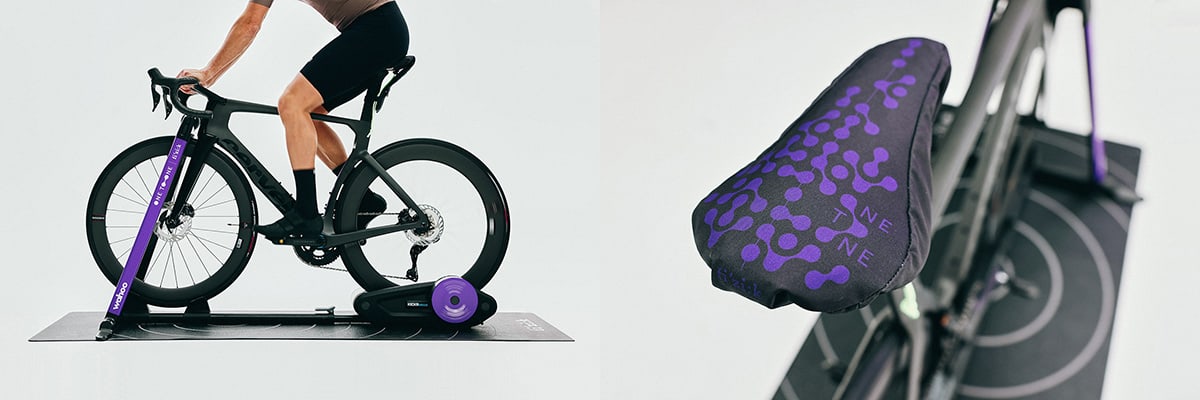
Riders can get measured and assessed easily on their own bikes, which can be set up on a Wahoo Kickr Rollr at select retailers. A trained bike fitter guides the One-to-One fit session using a dedicated mobile app. Relevant information about the rider’s current bike setup and saddle position is gathered through a simple questionnaire, then pressure data is captured on the rider’s current bike and saddle setup in all relevant riding positions.
Pressure data from each measurement session is recorded while riding on the handlebar tops, hoods, and in the drop position for various types of bikes. After processing, this data is cross-checked with a rider’s discipline and gender to ensure correct interpretation.
The results are displayed in a pressure chart showing the mean pressure across the saddle, the front and rear and left and right saddle pressure comparisons, the maximum pressure values and their locations on the saddle, the center of movement and pelvic tracking pattern, and the gross angle of pelvic hemisphere alignment.
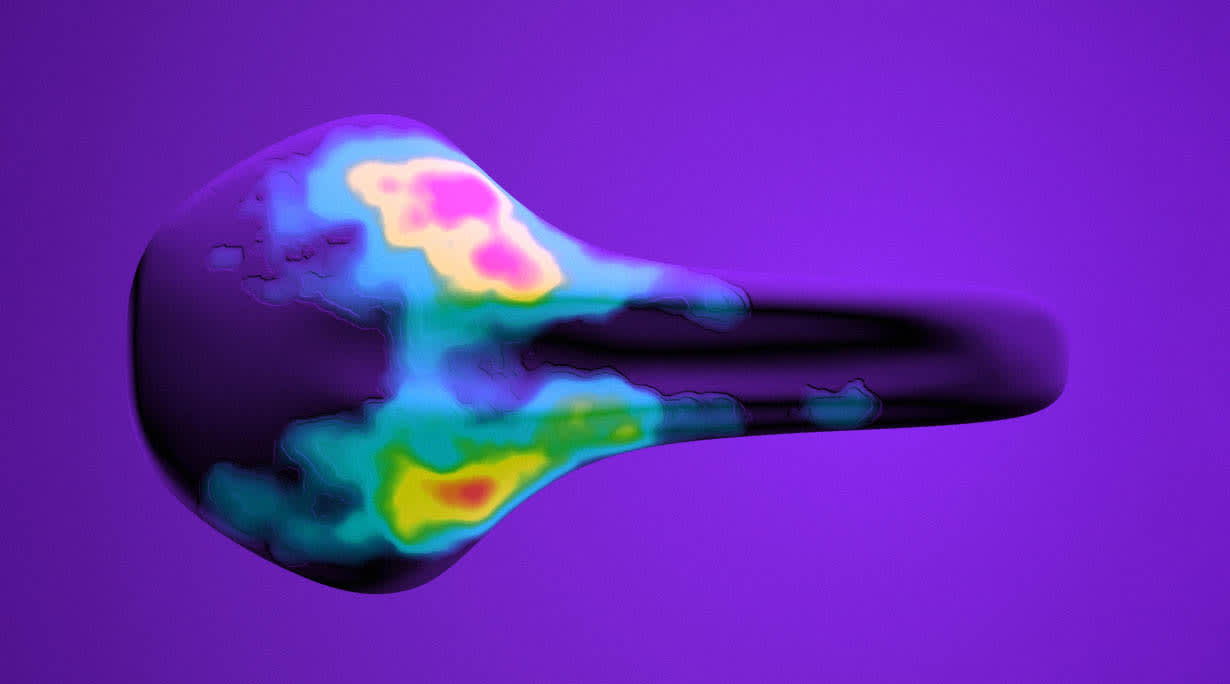
Converting Data to Design
The first step of a One-to-One measurement session is to match the rider with the ideal saddle shape. For this, Fizik developed a matching algorithm that takes into account all key parameters derived from initial data collection to determine the most suitable saddle shape for a given load type and riding style.
Pressure data is captured again on the rider’s current bike setup with the recommended saddle shape in all relevant riding positions. These new measurements on the selected saddle shape are used as the baseline to create the custom 3D-printed padding structure that reflects a rider’s specific needs, adapting to load pattern, compensating asymmetries and hotspots, and addressing instability.
While additive manufacturing has enabled the production of custom parts, it has been tough to scale these products to date because of the manual work involved with adapting designs as well.
Fizik leveraged Carbon’s Custom Production Software to automate the design of each saddle according to each rider’s unique data. A software program powered by Carbon Design Engine™ software translates pressure data into parameters for the elastomeric lattice structure that forms the saddle’s topper, dynamically fine-tuning it with distinctive cushioning. Thicker struts result in a denser zone offering more support, while thinner struts are used for more open zones that offer more comfort and compression. Transitions between zones are progressive and seamless. The automation of this design process is what enabled Fizik to offer this product to all of their customers, not just elite racers.
The rider can now select their exact saddle configuration (rail type) and finalize their order. The order is automatically transferred to Fizik, where it will be processed to create a custom saddle and shipped to the chosen address.
Production
Utilizing the Carbon Custom Production Software offering, custom-latticed saddle toppers are then marked with a unique serial number, added to print projects, and sent to a production facility via a fully automated workflow.
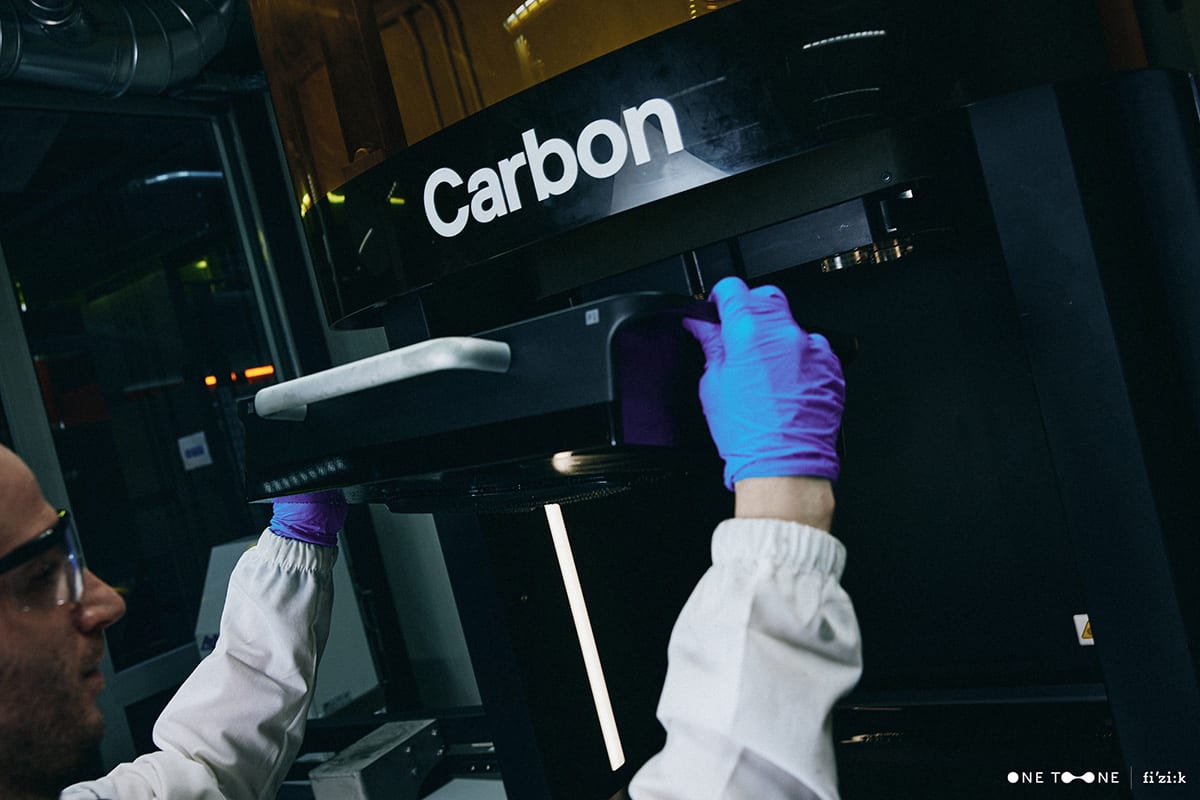
Once printed, the saddle topper is assembled by a team of highly-skilled technicians at Fizik, ensuring the highest-quality saddle for the most demanding riders.
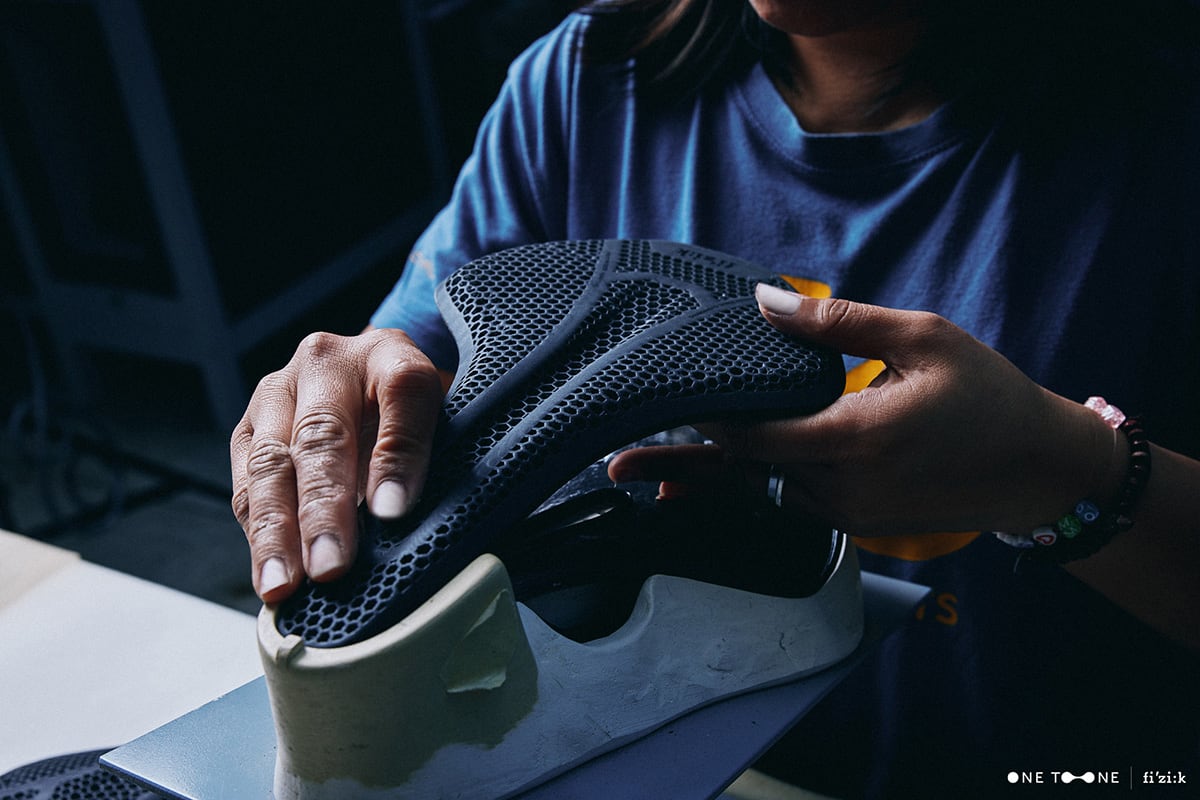
Ready to Ride
Once the new One-to-One saddle has been received and mounted on the bike, the rider can return to the dealer for a final session when pressure data will be captured on the new saddle for comparison to the initial saddle setup, highlighting all the parameters that have improved. You can purchase a custom One-to-One saddle from any of the retailers listed here, and learn more about Carbon’s Custom Production Software here.
